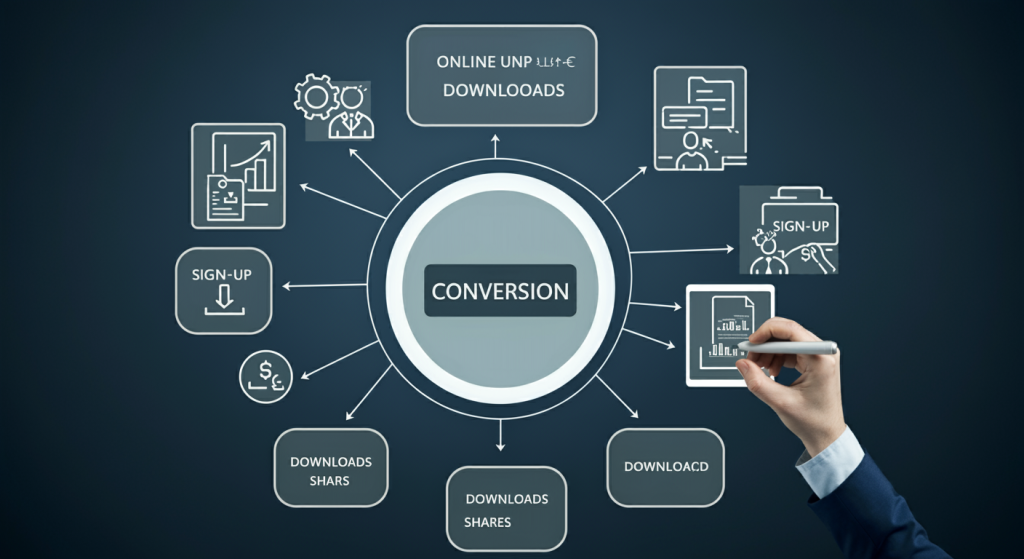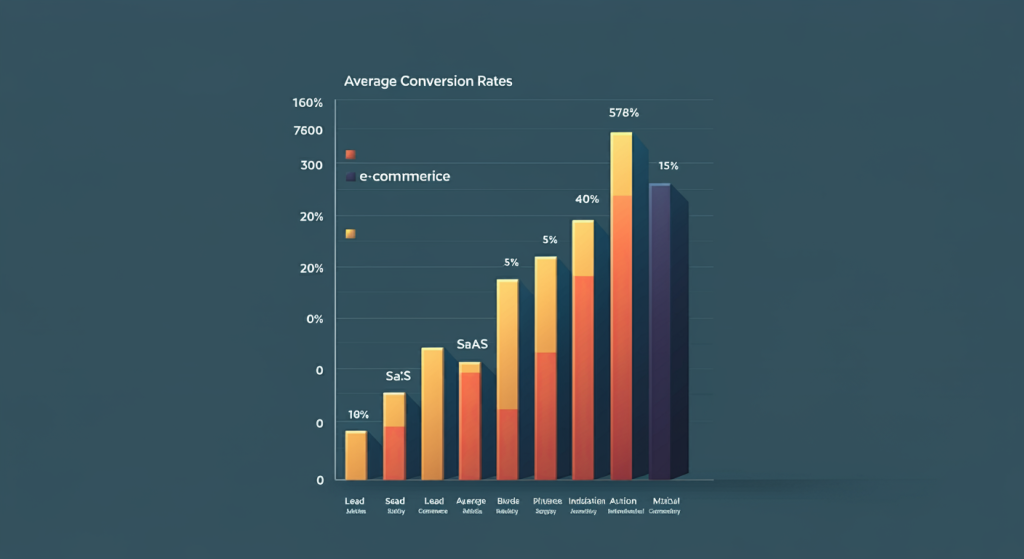Conversions and conversion rates are vital metrics in the digital marketing world, guiding businesses to evaluate the success of their online strategies. Whether you’re an e-commerce giant or a small business, understanding these concepts can unlock opportunities to optimize performance and maximize profitability. This article dives deep into what conversions are, how conversion rates are calculated, their significance, and actionable strategies to improve them.

Table of contents
Understanding Conversions: The Core of Digital Success

A conversion happens when a user completes a desired action on your website or digital platform. This action could range from making a purchase to signing up for a newsletter or downloading an eBook. Conversions vary by industry and business goals, but the essence remains the same: achieving user engagement that aligns with your objectives.
Conversions aren’t limited to sales; they encompass any measurable activity that adds value to your business. For instance, a blog site may consider time spent on an article as a conversion, while an app-based service might focus on account creation. By defining your goals clearly, you can better track meaningful conversions.
Why Tracking Conversions Matters
Tracking conversions allows businesses to understand their audience better. It sheds light on what works, what doesn’t, and where improvements are needed. By analyzing conversions, marketers can allocate resources effectively, refine campaigns, and boost customer satisfaction.
What Is a Conversion Rate? A Key Metric Explained

The conversion rate is the percentage of users who complete a specific action out of the total number of visitors. It is calculated using the formula:
Conversion Rate=(Number of ConversionsTotal Visitors)×100\text{Conversion Rate} = \left( \frac{\text{Number of Conversions}}{\text{Total Visitors}} \right) \times 100Conversion Rate=(Total VisitorsNumber of Conversions)×100
For example, if 1,000 users visit your website, and 50 make a purchase, your conversion rate is 5%. Conversion rates are critical because they help businesses measure the effectiveness of their marketing strategies.
Factors Affecting Conversion Rates
Several elements influence conversion rates, including website design, user experience (UX), content quality, call-to-action (CTA) effectiveness, and trust signals like reviews and testimonials. A slow-loading website or complex checkout process can deter users, while streamlined navigation and persuasive content can drive conversions.
Ideal Conversion Rates by Industry
Conversion rates differ across industries. E-commerce sites might aim for a rate of 2-3%, while lead-generation sites can achieve much higher percentages. Benchmarking against your industry standards is essential to set realistic goals and track progress.
The Importance of Optimizing Conversion Rates

Improving your conversion rate is more cost-effective than acquiring new traffic. By focusing on converting existing visitors, you enhance your return on investment (ROI) and build a more loyal customer base. Conversion rate optimization (CRO) involves testing and refining your website and campaigns to maximize their impact.
Benefits of High Conversion Rates
- Increased Revenue: More conversions translate directly into higher profits.
- Better Resource Allocation: Higher efficiency in marketing spend means reduced costs per acquisition.
- Enhanced Customer Insights: Optimizing conversion rates requires understanding user behavior, which can inform other business decisions.
- Improved Brand Loyalty: Satisfied users are more likely to return and recommend your brand.
Steps to Improve Your Conversion Rates

To boost your conversion rates, consider implementing these strategies:
1. Optimize Website Design and Speed
A clean, responsive website ensures users can navigate effortlessly across devices. Slow load times can significantly impact conversions, with studies showing that a delay of just a few seconds can increase bounce rates.
2. Enhance Content Quality and CTAs
Engaging content that resonates with your audience is key. Include compelling calls-to-action (CTAs) with clear, action-oriented language like “Buy Now,” “Learn More,” or “Sign Up Today.”
3. Leverage Social Proof
Trust signals such as customer reviews, testimonials, and case studies build credibility and encourage users to convert.
4. Simplify the Conversion Process
Reduce the steps required to complete an action. For example, streamline your checkout process by minimizing form fields or offering guest checkout options.
Common Conversion Rate Myths Debunked

1. High Traffic Equals High Conversions
While traffic is important, a high number of visitors doesn’t guarantee conversions. Focusing on user intent and experience is more impactful than solely driving traffic.
2. Conversions Are All About Pricing
Price is a factor, but user experience, product quality, and trustworthiness often outweigh cost considerations.
3. CRO Is a One-Time Activity
Optimization is an ongoing process. Market trends, consumer behavior, and technology constantly evolve, necessitating continuous adjustments.
Tools to Measure and Enhance Conversion Rates

Tools like Google Analytics, Hotjar, and A/B testing platforms are invaluable for tracking and improving conversions. These tools provide insights into user behavior, helping you identify bottlenecks and test improvements effectively.
Features to Look for in CRO Tools:
- Heatmaps and session recordings to understand user navigation.
- Analytics dashboards for tracking performance metrics.
- A/B testing to compare variations and identify what works best.
Conclusion: Why Conversions Are the Backbone of Digital Growth
Conversions and conversion rates form the backbone of any successful digital strategy. By understanding their nuances and focusing on optimization, businesses can enhance user engagement, increase revenue, and achieve sustainable growth. Prioritizing these metrics ensures your marketing efforts translate into tangible results, driving long-term success.



